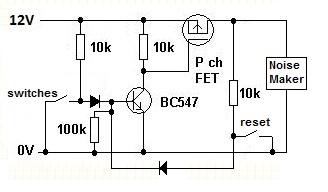The circuit as drawn is effectively configured as an emitter follower, with the relay coil acting as the emitter resistor. That means that the voltage at the emitter will follow the voltage at the base (minus one diode drop of approximately 0.6V).
In order for the relay to turn on in this configuration, the base must be brought one diode drop higher than the "pull-in" voltage of the relay coil. As a general rule of thumb, the collector current (which flows through the relay coil) is about 100 times the base current. This rule of thumb allows you to estimate the required base current if you know the amount of current that is supposed to flow through the coil when the relay is on.
The base current is a problem: Suppose you have a 12 Volt relay with a 600 Ohm coil resistance. That requires 20 mA through the collector, which means 0.2 mA through the base. But since the power supply is only 12 Volts, even connecting the base directly to the 12 V rail doesn't help: the two diode drops (one for the base-emitter and one for the diode) leave the emitter at 10.8 V, probably only barely enough pull in the relay.
If you put a resistor between the base and power supply rail, it gets even worse: pulling even 0.2 mA through a 10k resistor (like in your schematic) results in a 2 Volt potential across the resistor. So now your base is at only 12 V - 2 V = 10V, and the relay is 1.2 V below that, or 8.8 V. You're supplying only about three quarters of what the coil needs!
It's possible to make the circuit work using almost no extra parts, and I've included a schematic in this edit to help show what I mean. The basic difference is to switch the position of the transistor and relay, so that the transistor pulls down the negative side of the relay instead of pulling up the positive side. This is called a common-emitter configuration.
The circuit acts as (I think) you want it to, and the only new parts are two resistors: R3 and R1. You could use the original 10k resistor in place of R3, at the cost of slightly increased current consumption (1 mA vs. 0.2 mA) when the switches are all closed. R1 and D1 provide a path for coil current when the transistor T1 turns off. You may be able to use the original 1 k resistor for R1 if your transistor can withstand -10 V between the collector and emitter (you'll need to read the data sheet to find out). R2 is optional (you'll notice that I didn't specify a value), and depends on the specifications of your relay. If your relay is meant to be driven directly from a 12 V source, then R2 may be omitted. Any time one or more switch opens, the relay closes the normally-open contact.

simulate this circuit – Schematic created using CircuitLab




